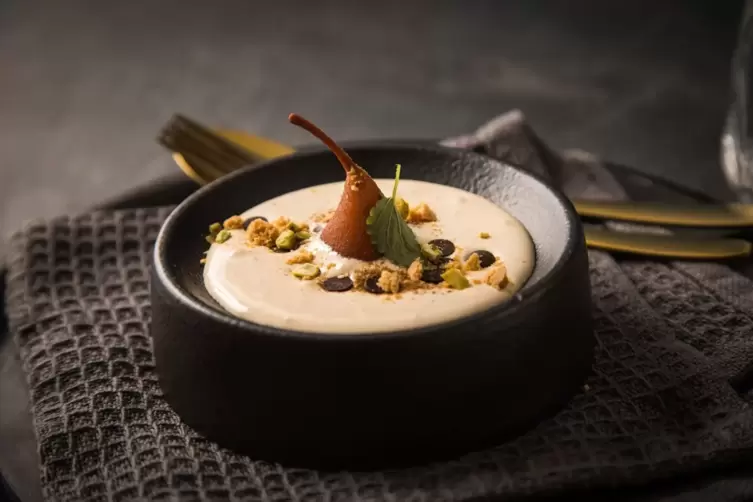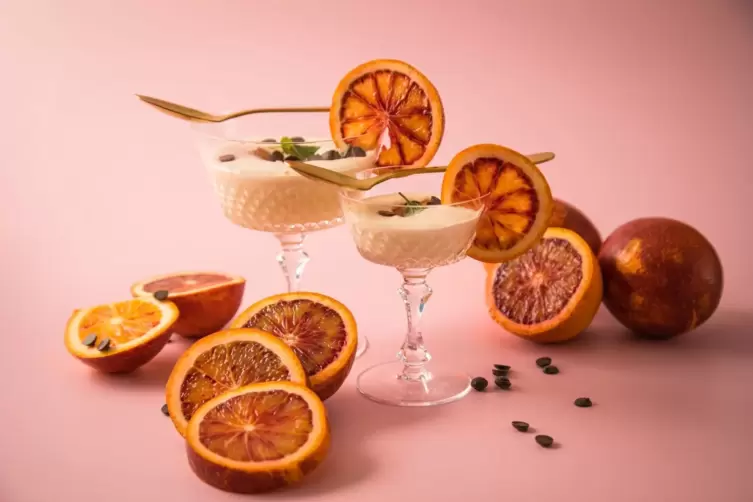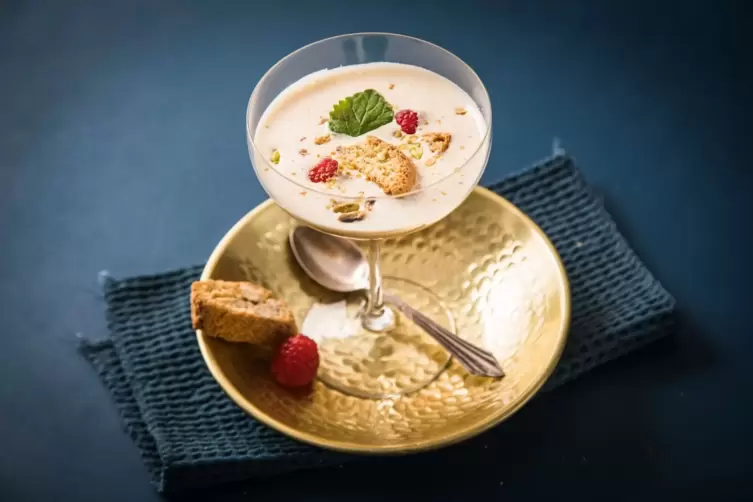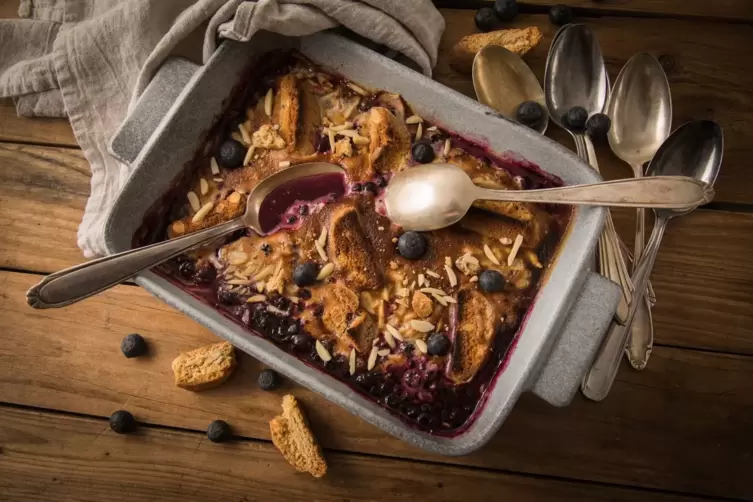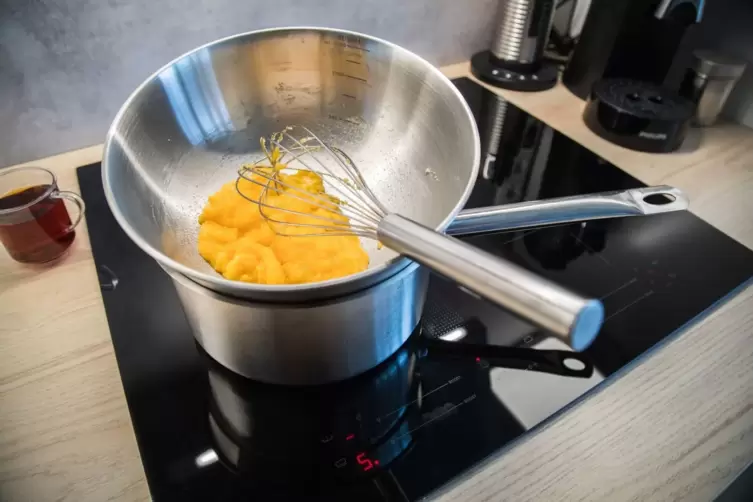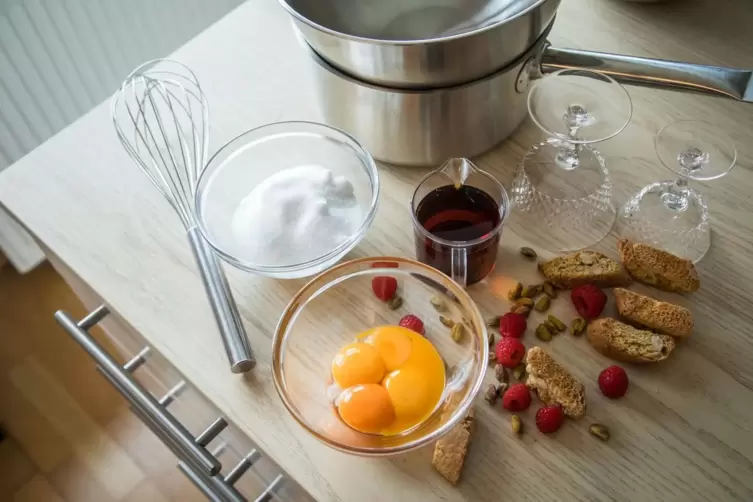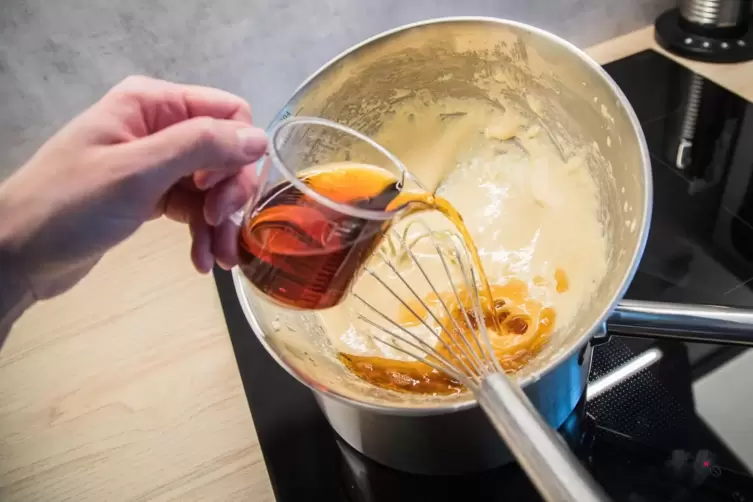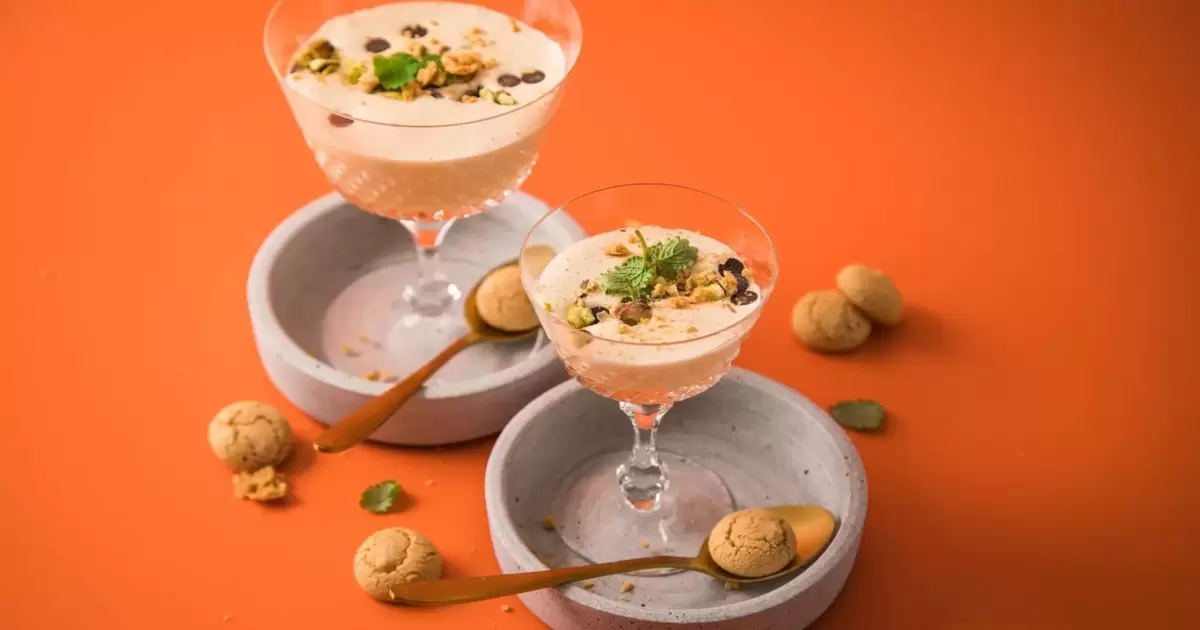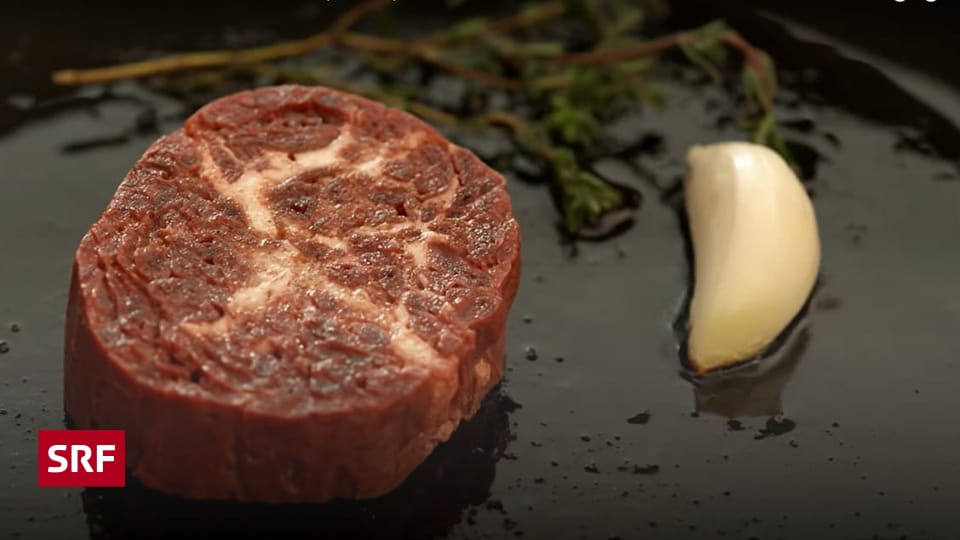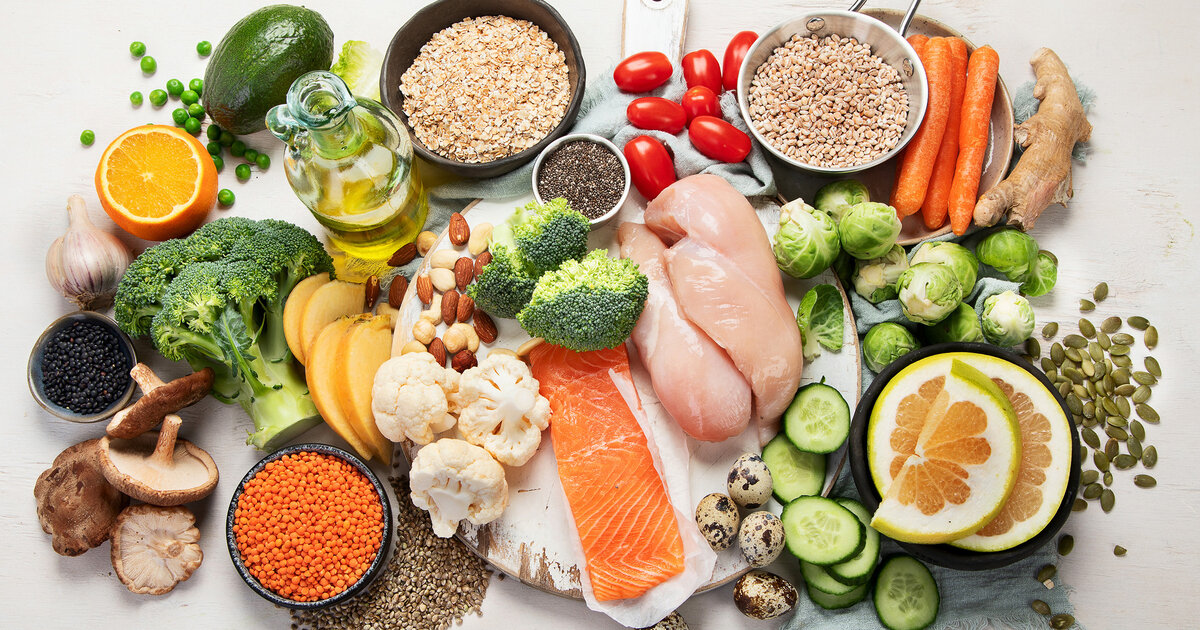Mainz (dpa/tmn) – A Zabaione is an airy, light dessert made from just a few ingredients. But the preparation requires a bit of sensitivity. Experts reveal how a fine foam ends up in the glass instead of scrambled eggs with wine and sugar.
Egg yolk, sugar and a little Marsala: that’s all you need for a classic zabaglione. Whether with iced berries in summer or with preserved pears in winter, the Italian dessert cream rounds off a menu in a foamy and creamy way.
And yet the dessert is considered a diva by some and quite a few amateur chefs prefer to avoid it. While egg whites can be whipped into a stable foam without much effort, this is not easy with egg yolks. Even if a small amount of foam forms, it quickly collapses and the fluffy effect is gone.
With warmth to the foam
One reason for this is the different protein structure of egg yolk and egg white, says Thomas Vilgis. He is a professor at the Max Planck Institute for Polymer Research in Mainz. He is also an expert in the physical and chemical processes involved in cooking. “Some egg whites get frightened just by seeing the whisk,” he says.
By simply beating, the proteins in egg whites change their structure. “You can imagine that a compact protein ball becomes a long thread,” explains Vilgis. And these long protein threads then form a foam, creating stable egg whites.
“Egg yolk proteins are not so easily impressed,” says the physicist. Their protein tangles don’t unravel just by beating them. In fact, sugar helps to partially denature, i.e. change, these proteins.
When you beat egg yolks and sugar, a light foam is created. But it quickly collapses again. “This is due to the fat particles, including lipoproteins, in the egg yolk,” says Vilgis. Because they make foam formation more difficult and destroy foam again due to their comparatively heavy weight.
What helps is heat: “Egg yolk proteins need temperature above all.” This is approximately the temperature that is required when cooking egg yolks. From around 63 degrees it changes its structure, at 65 degrees it is still nice and creamy, after that it starts to become lumpy. And who wants lumpy egg yolks in their dessert?
It’s easier in a water bath
Egg yolks and sugar are beaten with heat for the zabaglione. Getting the right temperature in the pot takes a bit of experience, says Tobias Henrichs. Or a water bath. Henrichs is a cookbook author and, as a teacher at a high school in Heilbronn, not only teaches history and social studies, but also cooking. “The water in the pot should be boiling,” he says. Then the egg yolks in the bowl above do not get too hot and can be beaten together with the sugar into a light, foamy, creamy mass instead of becoming scrambled eggs.
This traditionally happens in a copper bowl. This is particularly suitable because it reacts quickly to temperature. In addition, free copper ions can also stabilize the foam. “They are completely harmless to health,” says Thomas Vilgis.
Alternatively, stainless steel can also be used. The professor only advises against plastic – it reacts too slowly to the temperature. So that the temperature of the mixture does not fluctuate too much, the liquid – traditionally the Italian liqueur wine Marsala is used – should be incorporated slowly.
Pay attention to the foam, not the time
And when are you finished? “After about ten minutes,” says Tobias Henrichs. But that is just a guideline. How long this takes depends, for example, on the temperature of the ingredients, but also on the speed at which the liquid is added. More important than paying attention to the time is to watch the foam – if it feels good when whipped and is stable, the dessert is ready. “If you have a nice foam, you can’t do it better.”
In order to get the time right, cooking teacher Henrichs would not leave the preparation of a zabaglione to a food processor with a heat function, he says. “But it’s also something I particularly enjoy about cooking. The preparation dictates time and rhythm. You can’t do anything else at the same time. And you experience with all your senses how slowly a dish is created,” says the cookbook author.
Thomas Vilgis sees it similarly. “I would also always prepare Zabaione à la minute,” he says. Otherwise there is a risk of drying out and if the zabaglione sits in the fridge for an entire meal, the foam will slowly collapse again. “Of course you can do it beforehand, but then you will have losses.”
Variations
But while he remains classic in his preparation, Thomas Vilgis likes to vary the ingredients. Many recipes call for white wine or sparkling wine instead of Marsala. But you can also avoid alcohol altogether, says Vilgis. And you can also leave out the sugar. Because a zabaglione doesn’t have to be a dessert: “I love umami foams.” For example, he uses a good soy sauce, which he then dilutes with water and adds to the egg.
Or he stirs in a stock. «I also like smoke foam. If I do it the classic way, I cook smoked bacon and then use the fat, but you can also use a few drops of liquid smoke to help.”
That fits well with the history of Zabaione, says Tobias Henrichs. There is a recipe from 1570 by Bartolomeo Scappi, a famous Italian chef of the Renaissance. A zabaglione is mixed with cinnamon, chicken broth and butter. “Back then there was no category like dessert. Sweeteners such as honey and sugar were a luxury item and were used more like a spice,” says Henrichs. A zabaglione was more likely to be served in between or as an accompaniment to a dish rather than at the end of a meal.
